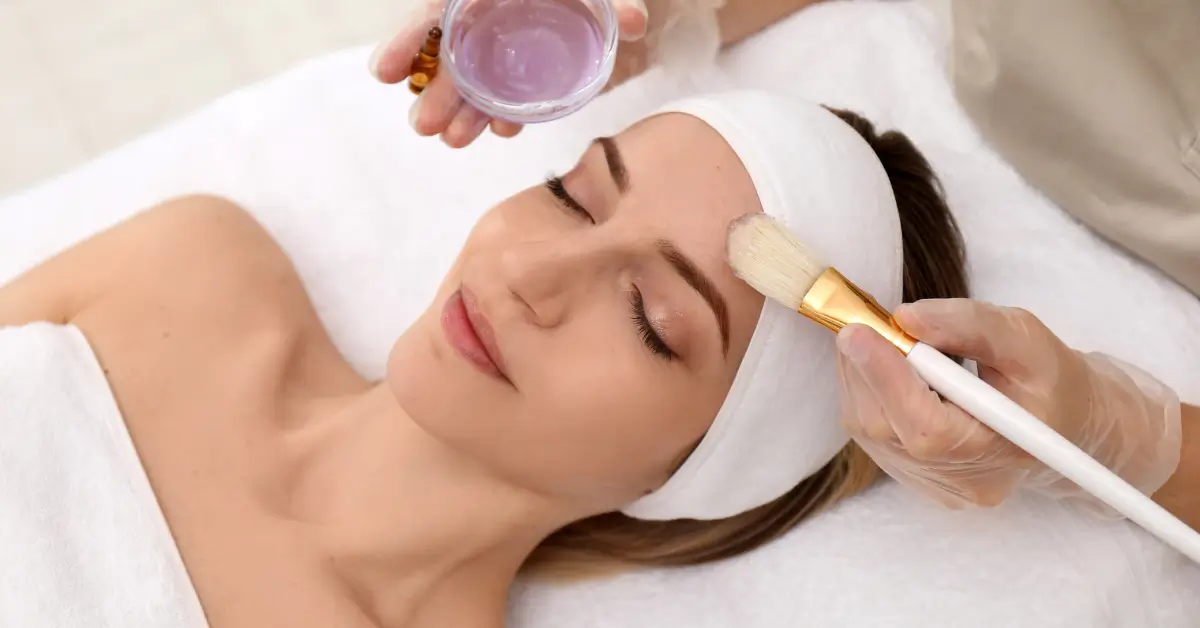
Chemical Peel Aftercare Guide – Heal Safely & Reveal Radiant Skin in Greenville, SC
Introduction
Chemical peels are time‑honored treatments that use acids to remove the outermost layers of skin. Superficial peels address dullness, fine lines and acne with minimal downtime, while medium and deep peels treat more severe photoaging and scars but require longer healing. Aftercare determines how well your skin heals and whether you achieve glowing results or end up with complications. Here’s a comprehensive guide tailored to our Greenville climate.

Immediate care (first 24 hours)
Your provider may leave the peeling solution on your skin for several hours after your appointment. Do not wash it off prematurely; the acids continue to work during this time. Once instructed, rinse gently with warm (not hot) water and pat dry. Skip your usual cleansers and actives. Do not apply makeup for at least 24 hours. Your skin may appear yellow if retinoic acid was used; this will fade within a few hours.
Days 1–5: gentle cleansing and hydration
For the first two days, wash your face with warm water only or a very gentle cleanser like Cetaphil or Dove. Follow with a light, fragrance‑free moisturizer that includes SPF 30–44, applying it as often as needed to combat tightness and dryness.. Avoid sweating, hot showers, saunas, swimming, steam rooms and vigorous exercise to prevent irritation or premature lifting of peeling skin.

Days 3–5: expect peeling
Around 48 hours after treatment, your skin will start to peel. This process can last from two to seven days. Do not pick, pull or scrub the shedding skin. Peeling prematurely can cause scarring or post‑inflammatory hyperpigmentation. Continue washing with a gentle cleanser twice a day and reapply a hydrating, SPF‑infused moisturizer frequently. Sun exposure should be completely avoided; wear a wide‑brimmed hat and stay in the shade if you must be outdoors. Greenville’s summer sun is strong, so consider scheduling deeper peels in autumn or winter when UV intensity is lower.
Days 6–10: resume your routine
Once peeling stops and your skin feels comfortable, you may resume your normal skincare routine—but ease back into active ingredients. Start with non‑irritating products like hyaluronic acid serum and a bland moisturizer. Wait at least 10 days before using retinoids, vitamin C, exfoliating acids or other peels.Your skin remains photosensitive, so continue diligent sun protection for several weeks.

Avoid the following until healed
Picking or pulling – let dead skin shed naturally to avoid scars and dark spots.
Heavy sweating – exercise, hot tubs and saunas increase circulation and may cause deeper peeling.
Makeup – avoid for at least 24 hours; then use mineral makeup sparingly.
Hair removal – don’t wax, thread or use depilatory creams on treated areas until fully healed.
Other treatments – postpone facials, microneedling, laser or waxing for two weeks.
What if you don’t peel visibly?
Not everyone experiences dramatic flaking, especially with superficial peels. Lack of visible peeling is not a sign of failure. The acids still unclog pores, stimulate collagen and improve tone beneath the surface. If you have darker skin, your provider may opt for lower concentrations to minimize risk of hyperpigmentation. Focus on how your skin feels and looks over the next few weeks.
Products and ingredients to use
Gentle cleanser – creamy, non‑foaming formulas without fragrance.
Moisturizer with SPF – choose creams with ceramides, hyaluronic acid and niacinamide. In winter, thicker creams help counteract dryness. Mineral sunscreens with zinc oxide or titanium dioxide are less irritating for post‑peel skin.
Healing balms – petrolatum or silicone‑based ointments can soothe extremely dry patches. Use sparingly on flaky areas.
Hydrating serums – hyaluronic acid or panthenol to attract moisture; avoid acids or active treatments.
Local considerations
Greenville’s climate can be unforgiving after a peel. Summer humidity combined with intense UV radiation increases the risk of hyperpigmentation and infection. Schedule medium or deep peels during cooler months and always use sun protection. In winter, indoor heating dries the air; run a humidifier to maintain moisture. Avoid midday sun year‑round.
When to call your provider
Seek medical advice if you notice severe swelling, pus, fever, persistent redness beyond 10 days, darkening patches or signs of infection. A board‑certified dermatologist can assess your skin and prescribe medication if necessary.
Conclusion
Chemical peels are powerful tools for rejuvenating the skin when performed by qualified professionals. Proper aftercare is critical for safe healing and optimal results. Follow these guidelines, listen to your aesthetician’s instructions and protect your skin from sun and heat. For personalized aftercare products and follow‑up visits, schedule an appointment with Skin By Kim. We’ll guide you through every step so you can enjoy smooth, radiant skin.